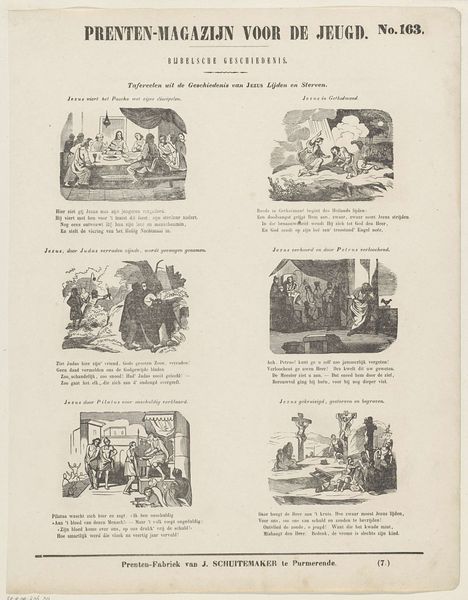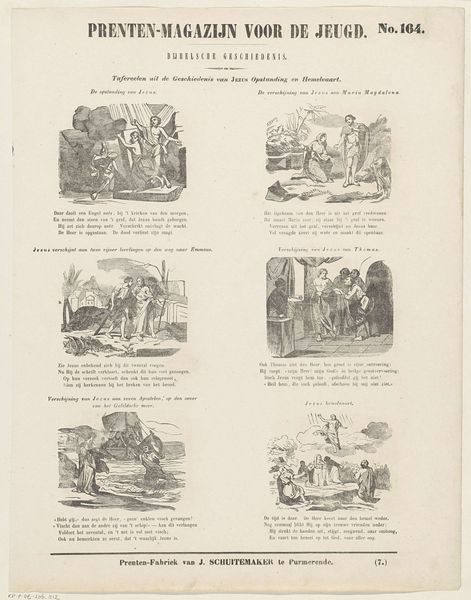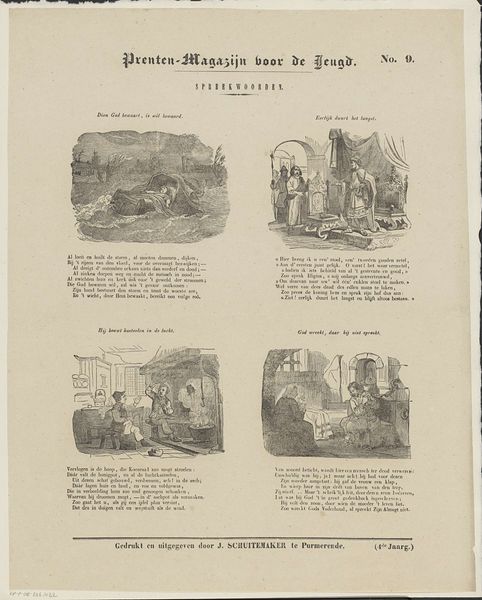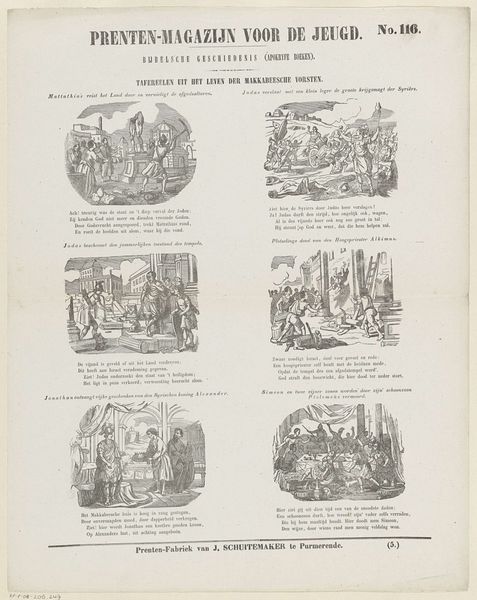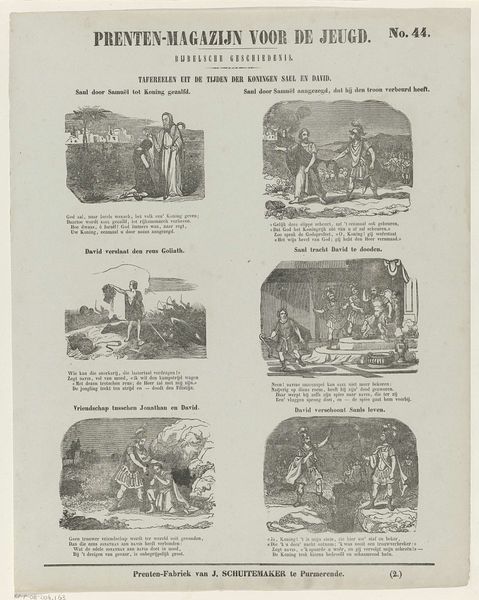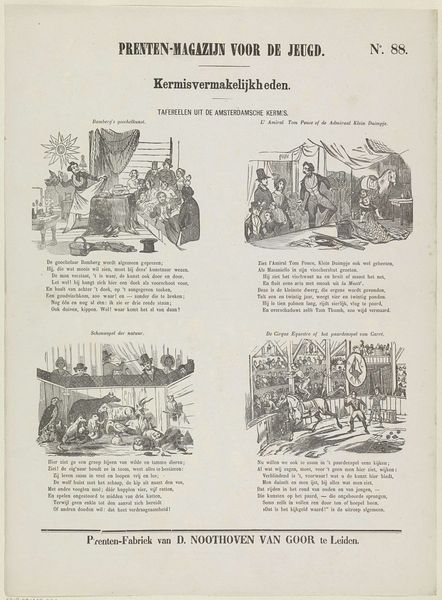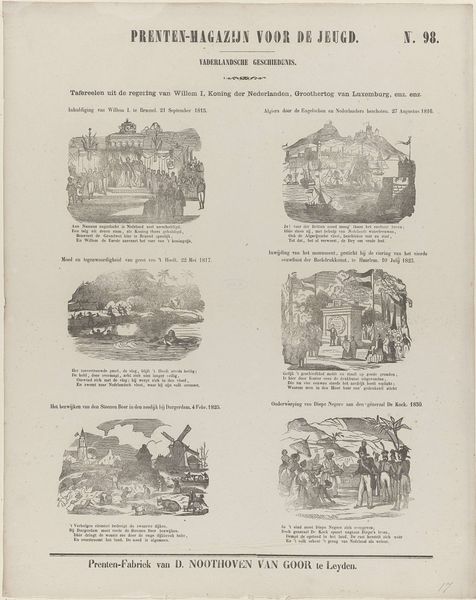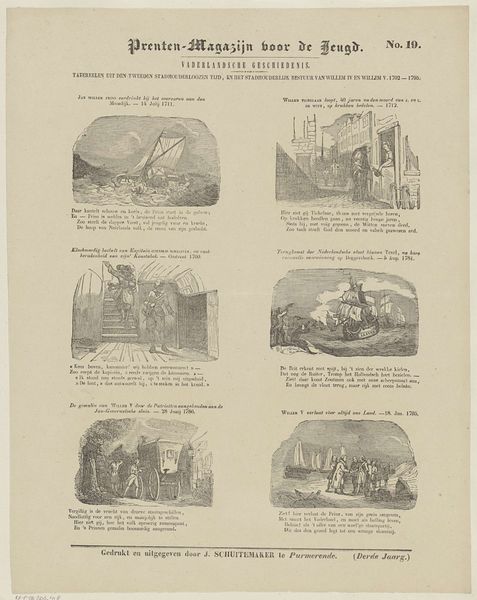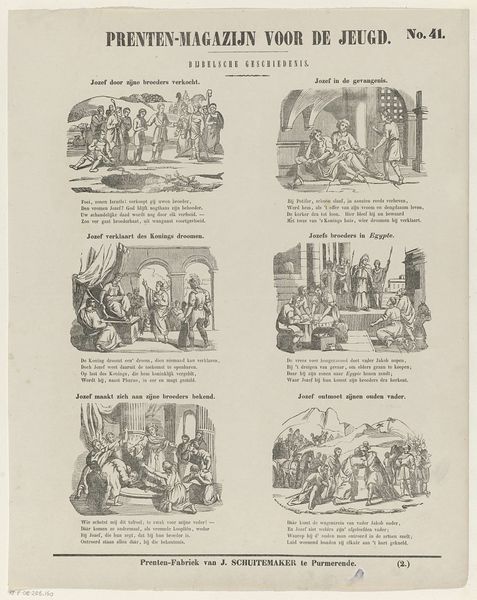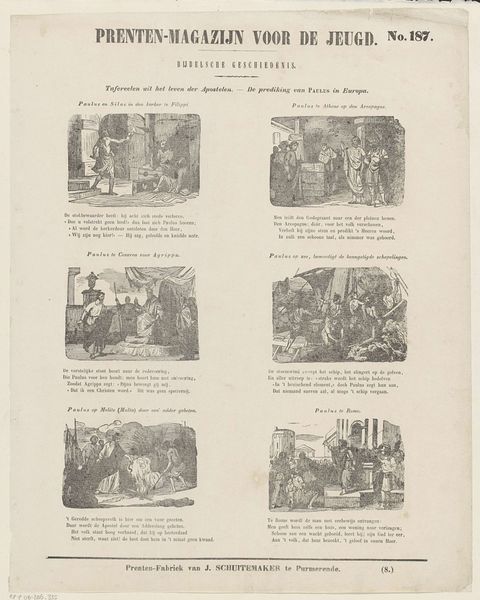
graphic-art, print, textile, paper, engraving
#
graphic-art
#
aged paper
#
narrative-art
#
dutch-golden-age
# print
#
textile
#
paper
#
paragraph style
#
personal sketchbook
#
journal
#
romanticism
#
thick font
#
history-painting
#
handwritten font
#
classical type
#
word imagery
#
engraving
#
historical font
#
columned text
Dimensions: height 425 mm, width 345 mm
Copyright: Rijks Museum: Open Domain
Curator: Looking at this print, “Ontleend uit de ongewijde geschiedenis” from 1844 by Jan Schuitemaker, I'm struck by how it uses these small scenes almost like a storyboard. Editor: My first impression is that of an illustrated proverb collection. The gray tonality evokes a sense of looking at the past, at antique knowledge. And given the variety of miniature historical narratives presented on a single sheet of paper, it evokes that sense of moralistic literature made for youngsters, like the *Emblemata* tradition for example. Curator: Yes, precisely! And Schuitemaker published it as a print, making it easily reproducible and thus accessible. Each image, though small, contains a density of figures and actions which gives it dramatic heft. I’m drawn to how gestures become amplified. The print really comes alive because each proverb tells its own full and dynamic story, despite its compressed size. Editor: The imagery of each little scene feels as though these stories become condensed encapsulations of deeper truths about human behaviors. Curator: Note also how they use stark contrasts between light and shadow. See how those illuminated figures really jump out from their backgrounds, emphasizing that moment of insight or crucial decision-making in the depicted proverb. The compositions underline emotional weight. Editor: That's right. And each section also shows a relationship with its related piece of text, which creates an interesting interplay between word and image as teaching moments for contemporary Dutch society. We need to also account for the distribution of this series: magazines as sources of popular knowledge, moralism and national identity construction! Curator: That's insightful – a very public, accessible, and populist type of education going on here! To circle back, examining this print as a set of potent visual tools highlights how readily the language of images encodes deeper historical understandings of culture, belief, and being. Editor: Exactly! Examining the images helps to clarify how printed visuals informed public memory during an era characterized by tremendous political and cultural upheaval.
Comments
No comments
Be the first to comment and join the conversation on the ultimate creative platform.
